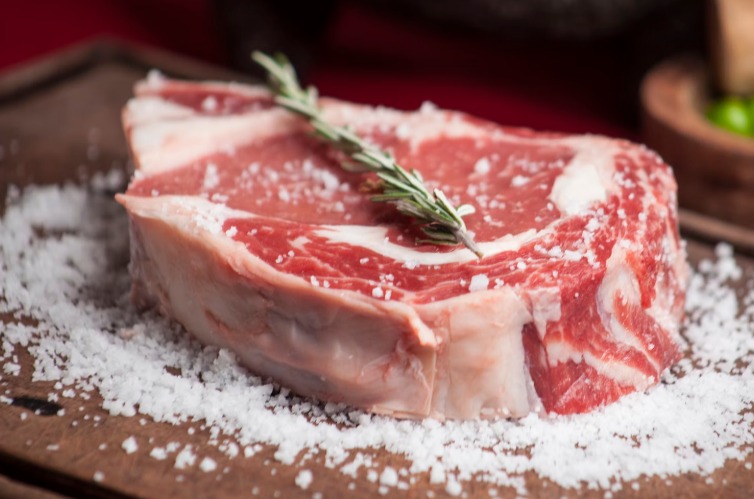Brazilian Beef Exports Closing 2023 on a High Note Driven by Renewed Chinese Demand; Chile and Russia the Major Winners Year-to-Date

According to data from the Brazil Ministry of Industry, Foreign Trade, and Services, Brazil's beef exports (excluding derived products) climbed by 26% year-on-year (YoY) in terms of volume to a new record high for a November, at 187.9 thousand metric tons (mt). This was the first YoY climb in five months. Similarly, export value climbed by 11% YoY – the first YoY rise in 10 months – to a new November record of USD 863 million. However, this rise in value can be attributed only to the larger quantities sold, as the average price fell by 12% YoY to USD 4.59 per kilogram (kg).
Most of the increase can be attributed to renewed demand in China, which provided the largest YoY gain in terms of tonnage during November, followed by large gains in the United Arab Emirates (UAE) and Chile. Behind this renewed demand are the current low prices. Exported volume grows (or its decline decelerates) as prices decline (or their increase decelerates). This negative relationship is particularly stronger in China compared to the average for all other destinations. When beef prices are high, global demand tends to shift to cheaper protein substitutes, such as poultry and pork.
It's worth noting that, as of December 25 of this year (16 working days), preliminary data from Brazil's Ministry data showed that Brazilian beef export value is averaging USD 47.28 million per working day, which is 37% higher than the average per working day in Dec-22, which suggests November’s export volume growth trend continues.
Source: Brazil’s Ministry of Industry, Foreign Trade, and Services; Tridge
Year-to-date, Chile and Russia are topping the ranks amid YoY gainers. From Jan-23 to Nov-23, total Brazilian beef exports totaled 1.797 million metric tons (mmt), representing a decline of 41.6 thousand mt or 2.3% YoY. Imports started with YoY growth in Jan-23, however, imports since then began trailing 2022’s after an import ban was issued to China and several other destinations due to the finding of an atypical case of mad-cow disease. While the ban lasted roughly a month in the largest destination (China), imports haven't been able to return to levels above 2022 as of November. However, helped by the strong numbers in November, the gap is now at its narrowest since Feb-23, when the bans were implemented.
Source: Brazil’s Ministry of Industry, Foreign Trade, and Services; Tridge
While China is leading the year-to-date decline in exports due to its large share size and the natural drop from the Feb-23 to Mar-23 ban, other locations are growing in market share. Among these, Chile and Russia are highlighted as they lead the YoY gains. From Jan-23 to Nov-23, Brazilian beef exports to Chile totaled 91.3 thousand mt, rising by the largest YoY increase in terms of tonnage (+20.3 thousand mt) and becoming the second largest export destination, just behind China (from a previous fourth place). Meanwhile, exports to Russia totaled 47.3 thousand mt, which makes it the seventh largest destination for Brazilian exports, up one place in the rank. However, particularly notable is that in terms of YoY growth in tonnage, Russia ranks second, with a total growth of 12.8 thousand mt or 37%. Further growth is expected at this location as Russia authorized 11 new meatpacker plants in Brazil this December to receive imports. The increase in exports to Chile can be attributed to lower domestic beef production and the rise in exports to Russia to a stronger commercial relationship in agriproducts between the two countries since 2022, which is also reflected in increased Brazilian imports of Russian fertilizer.
Exports are expected to resume YoY growth in 2024 with further production growth. The United States Department of Agriculture (USDA) expects Brazilian beef exports to grow by 3.6% in 2024, as beef production is forecasted to increase by 2.6% next year as cattle slaughter increases and both domestic and external demand grow.
Short-term price outlook. Prices stayed relatively flat compared to the previous month, at USD 4.59/kg, down only by one cent versus Oct-23 levels and in line with Tridge’s expectations. In YoY terms, prices fell by 12%, but it's worth noting that this level represented the slowest YoY decline pace since January of this year. Prices continue to approach the five-year average, now at a narrower gap of -1.8%. This suggests the global market’s oversupply is easing and the market is returning to a balance. Seasonality points to a month-on-month (MoM) decline in December, but there is not much downside room as pointed out before. However, as production is expected to continue growing next year, the upside is also seen as limited in the months ahead, rendering a net effect translating into flat prices.